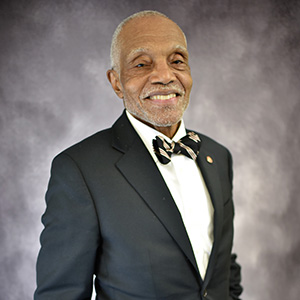OAG Attorneys Offer Practice Tips From First Virtual Trial
November 24, 2020
As the pandemic continues and many jurisdictions reinstate or strengthen existing measures to combat the spread of COVID-19, virtual practice has become increasingly common. Even when courts begin to resume normal operations, law practice will be increasingly digital and remote, as evidenced by the D.C. Superior Court’s recent introduction of an eSummons jury notification system and significant investment in expanding its remote courtroom capacity.
Attorneys need to familiarize themselves with some of the particular concerns related to virtual practice, and beyond attending hearings or arguing motions online, they may have to build an entire case for remote trial.
In October the D.C. Office of the Attorney General (OAG) did just that, completing its first virtual civil trial involving a complex commercial matter. The bench trial included testimony by a dozen witnesses and hundreds of pieces of evidence.
“The big, important thing is preparation. Preparation’s important in any trial, but even more so in this virtual experience, because there’s so much that can go wrong,” says Chad Copeland, deputy attorney general in the OAG’s Civil Litigation Division. For the OAG this means replicating the trial day environment, including the court’s virtual platform (Webex in the case of the Superior Court), equipment available to the witnesses, and testimony location of the witnesses. Copeland says doing so allows attorneys to identify and correct issues with internet bandwidth, lighting, and sound that could damage the presentation of their case. It is also an opportunity for witnesses to familiarize themselves with the quirks of the conferencing system.
Witnesses may require special instruction, both before and during trial, on reading prepared statements, surfing the web, or otherwise violating the rules of the court. In addition to advising witnesses beforehand, Copeland suggests requesting that the judge admonish witnesses in advance of testimony to avoid such lapses.
Maximize Visual Real Estate
The OAG not only purchased some equipment but it also prepared spaces to avoid background noise, poor lighting, and unstable internet connection. Wherever possible, attorneys and witnesses should wire directly into their router rather than relying on Wi-Fi systems that can provide inconsistent connectivity, says Stephanie Litos, assistant deputy attorney general for the Civil Litigation Division.
With Webex, there is an option for the host to hide some parties from the screen. “That was a feature we asked the judge to use so he’d get as big a square of our faces and our witnesses as possible. Frankly, we wanted the biggest view of his face as possible . . . to see how he was receiving things,” Copeland says.
“The other thing we asked of the judge was to have anyone who was not speaking to turn off their video,” adds Litos. This helped ensure that attorneys maximized their visual real estate during argument.
Communication with the court during the preparatory phase can be very helpful. Copeland says that in meetings leading up to the trial, the OAG attorneys asked what kind of setup the judge would be using. Understanding the size of the screen they would be viewing is particularly helpful in the case of demonstrative evidence. Although attorneys physically present in the court have technology available that allows them to easily project, pan, and zoom pieces of evidence on the fly, these kinds of adjustments can be much more complicated on virtual platforms.
Litos says that while the OAG often uses demonstrative evidence in opening and closing arguments, there were greater opportunities to do so on a virtual platform. “In a courtroom you don’t want to be there just paging through a document on your computer; that’s not interesting … but when you are virtual it is much more dynamic.”
Virtual trials also allow for a big-picture view of the parties involved. It may be awkward in court to look at opposing counsel’s reaction to testimony or evidence, but in a virtual hearing you can observe the expressions and postures of all participants simultaneously. This works two ways: Attorneys can take advantage of the additional information, but they also need to be aware that they, too, are visible at all times, so it’s important to avoid inadvertently helping the opponent by communicating one’s reactions.
Prepare for Tech Disruptions
Despite all these careful preparations, disruptions are still likely to occur. Almost an entire day of trial was lost during the OAG’s recent litigation because of technical issues on the judge’s part, proving that everyone is susceptible to technical mishaps or other complications outside of one’s control.
For the OAG, avoiding disruptions on its part involved preparation, teamwork, and redundancy. Attorneys were familiar with one another’s presentations and responsibilities, and they worked together to address issues as they arose. Had one attorney’s equipment failed, others were ready to jump in to cover.
The OAG had a tech officer responsible for handling and presenting evidence virtually, which was an enormous asset, but Copeland and Litos say that practitioners still need to be familiar with the technology. During Litos’s closing argument, the judge asked to see a previously submitted piece of evidence. The tech officer was unavailable at that time, but another member of the team, familiar with the system through practice, was able to step in and present the document.
Given the frequency of equipment failure, redundancies of all sorts can be helpful in preventing or overcoming obstacles. Not all practitioners will have access to the same resources, but backup systems should be implemented wherever possible.
In all likelihood, virtual trials aren’t going away. “The courts have a real problem in that their backlogs are getting further and further backed up,” Copeland says. “They’re looking for cases that can resolve, and if it’s a bench trial, you should expect that to be a priority right now because the jury trials can’t go forward.” Litos adds, “It’s not just trials, either; a lot of what we’ve said applies to a big evidentiary hearing or a Daubert motion … it might not be as big as a trial, but you’ll have the same considerations come into play.”





